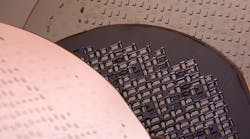As the equipment, devices, and gadgets that we use in our everyday lives get smaller and smaller, the miniaturization trend has come front and center in both the industrial and consumer electronics industries. At the heart of many of these developments are Micro-Electro-Mechanical Systems (MEMS), or the miniaturized mechanical and electromechanical elements that are manufactured using the techniques of microfabrication.
No longer relegated to the science lab or engineering workbench, MEMS have become fairly commonplace within the electronics industry and those sectors that rely on them, including automotive, healthcare, and manufacturing—to name just a few.
A Growing Force
Over the past several decades MEMS researchers and developers have demonstrated an extremely large number of microsensors for almost every possible sensing modality, according to the MEMS Technology Exchange (MNX), including temperature, pressure, inertial forces, chemical species, magnetic fields, radiation, etc. Remarkably, MNX reports, many of these micro-machined sensors have demonstrated performances exceeding those of their macroscale counterparts.
In assessing the size and potential of the MEMS market, Technavio estimates that it will reach $20.26 billion (USD) by 2020 by growing at a CAGR of nearly 12%.
Much of that growth will be driven by the increased usage of MEMS in devices like smartphones, wearables, vehicles, medical devices, and industrial devices.
Consumer electronics is the largest market for MEMS, according to Technavio, which expects the Internet of Things (IoT) to boost demand as “a large number of MEMS would be required for smart homes, building and industrial automation, and smart-grid applications.”
According to Technavio analyst Sunil Kumar Singh, demand for MEMS is also being driven by declining average selling prices (ASPs) and increasing benefits such as low space and high accuracy. “MEMS are small enough to be soldered directly onto the circuit boards,” Singh said. “This provides technology with a price advantage.”
Stepping Up to the Plate
A quick survey of the electronics industry reveals some clear signs of increased demand for MEMS. Earlier this month, for example, United Microelectronics Corp. (UMC) forged a partnership with APM to enhance MEMS service capabilities.
Founded in 2001, APM is a pure-play MEMS foundry service provider. The joint effort between the two firms is expected to help shorten the initial MEMS development cycle and provide ample, scalable production capacity with competitive manufacturing efficiency to successfully and rapidly commercialize MEMS chips, according to the company press release.
Distributors are also getting into the MEMS game and making it easier for procurement professionals to get their hands on the very products that are driving the miniaturization trend. In August, for example, electronics distributor Avnet added SiTime’s MEMS timing solutions to its product lineups in the Americas and Asian. SiTime offers MEMS-based silicon timing solutions that can replace legacy quartz products, providing greater performance, programmability, simplified board layout, and reduced cost.
MEMS are also making their mark on IoT. In Will MEMS Become the New Platform for Industrial Sensors?, Machine Design’s Leah Scully discusses how MEMS may fit microscopic moving components and electronics onto a single chip so that they can work together in a streamline, compact system. To advance this level of innovation, Bosch is partnering with seven other European companies to develop a MEMS platform that will lead to low-cost sensors for the IoT.
“What makes [MEMS] attractive for the IoT is that they typically contain all their functioning parts, including electro-actuators and electrical connections, on a single chip,” Scully writes. “A MEMS chip may also include its own power-generating system, eliminating the need for external power supplies for simpler integration into machine design. To this end, AMELI aims to build a MEMS that will be sufficient for use in industrial settings.”









